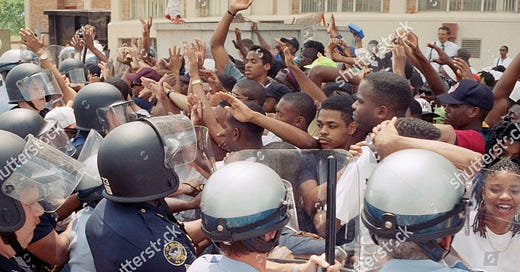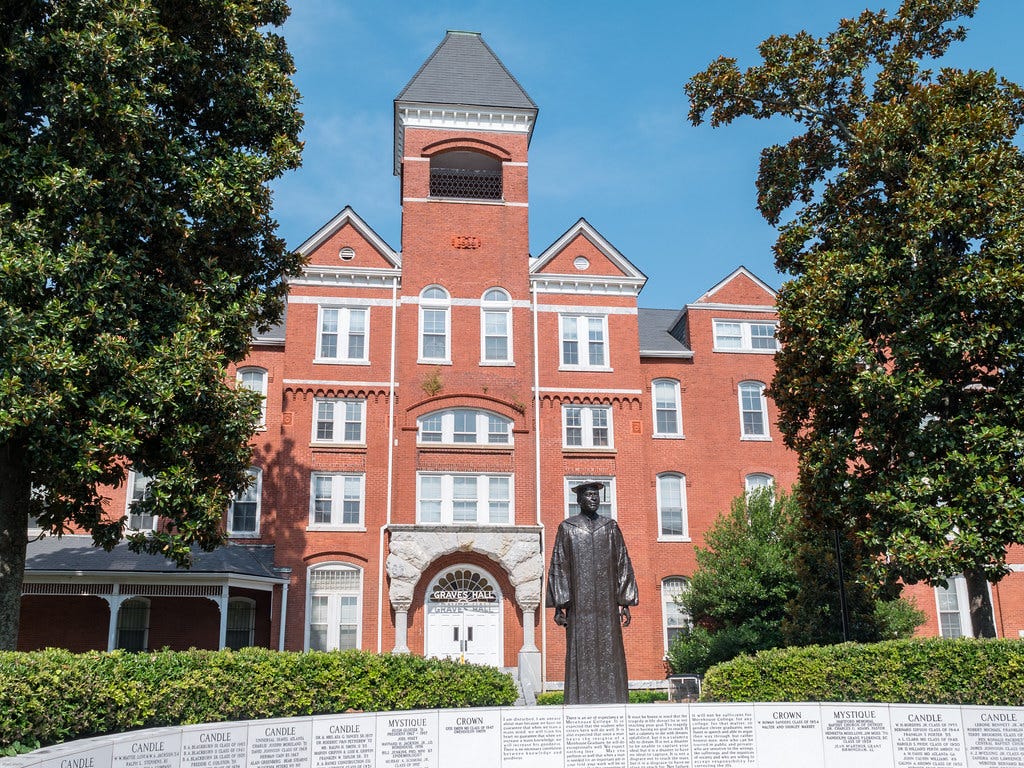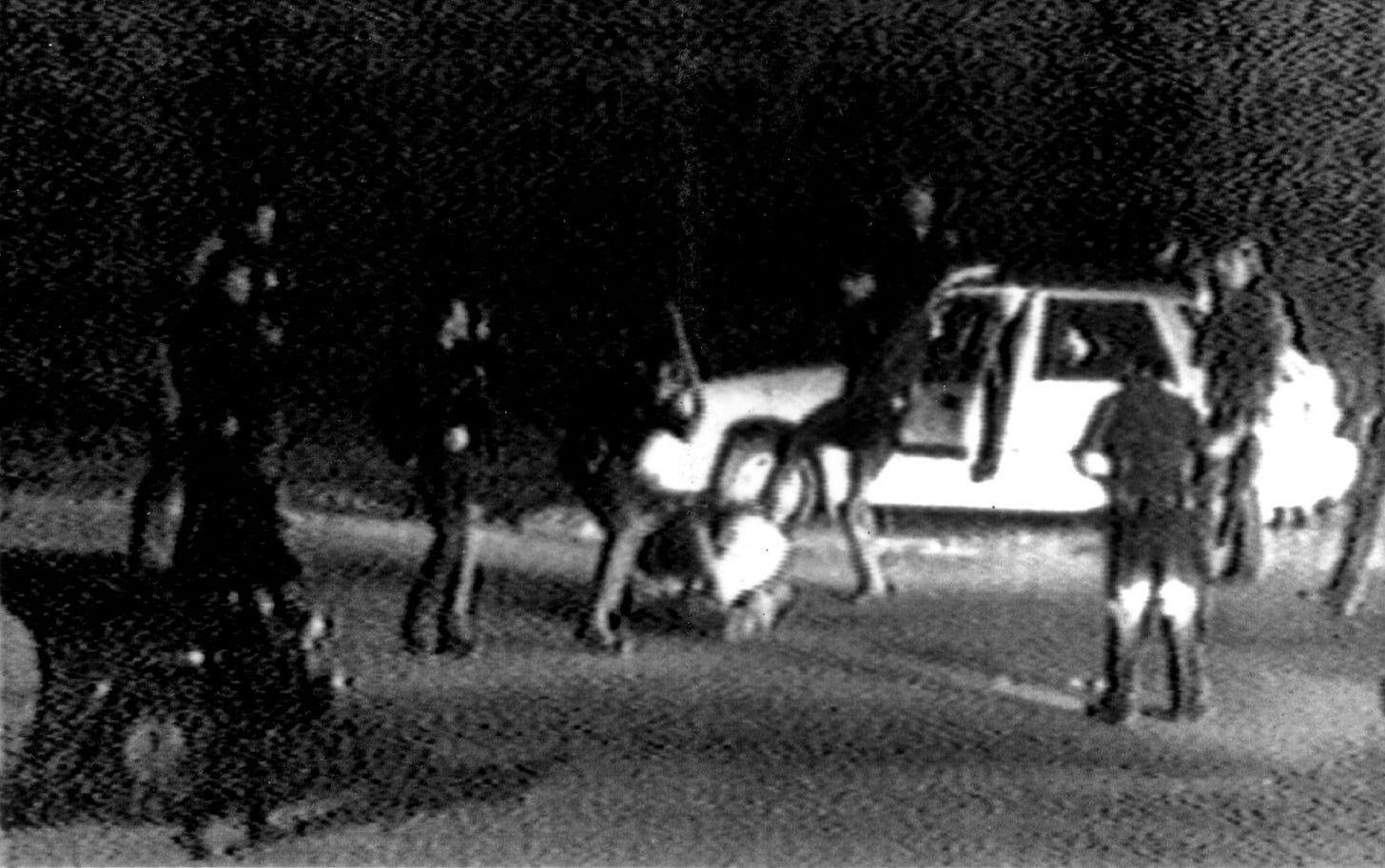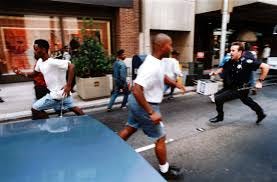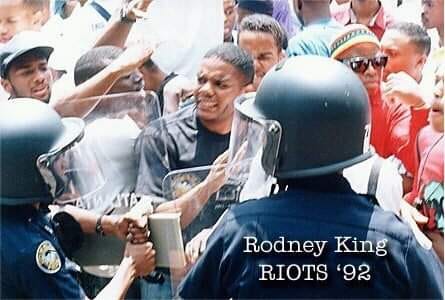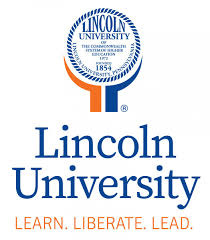“A riot is the language of the unheard…” Dr. Martin Luther King circa 1967
The Ancient Romans were fond of the Latin idiom "Tempus Fugit," which translates in English as "Time Flies," which is certainly the case when I realize that 1992 was 30 years ago. To be honest, '92 feels like it was just yesterday!
Three pivotal events took place in my life in 1992 that seals that year’s memory forever: 1. I made the Morehouse College quiz bowl team as a sophomore and traveled to Los Angeles for the first time to play in the national tournament; 2. My childhood best friend, Chris Henry, died; 3. The Rodney King verdict and subsequent riots in Los Angeles and Atlanta reminded my generation how very real systemic racism remained three decades after the end of Jim Crow.
While I will write about prongs one and two later this year, I woke up this morning reminiscing about the third prong after reading about how a number of historic buildings on HBCU campuses are being razed for new construction, and how I am grateful that the iconic buildings at Morehouse have been refurbished through the years. I also thought about how the historic quadrangle on Morehouse's campus, which includes the oldest building on the yard, Graves Hall, served as part of the backdrop of an intense struggle between students at the AUC (Morehouse, Spelman, Clark-Atlanta, Morris Brown) and the police in the wake of the Rodney King verdict in April of ‘92.
When Rodney King's beating was first reported early in my sophomore year, my initial reaction, one consistent with being the sheltered son of a police officer, was that he probably deserved what he got. But the video dispelled my gut level reaction; King, arrested on charges of speeding, was beaten senseless by four white officers who could have easily cuffed him after the first set of blows. While it was later determined that drugs were in King’s system, the tape was irrefutable evidence that there was a point in which the beating had gone too far.
Despite the video footage of the horrific beating, a jury in majority white Simi Valley acquitted the officers of any wrongdoing. While several officers were eventually charged by the Bush Justice Department and convicted of violating King’s civil rights, for many Blacks, in the hours immediately following the state court acquittal, vigilante justice became the order of the day.
Across America, people watched at rapt attention as looters in L.A. fought with the police, including the infamous scene of one hitting Reginald Denny, a white trucker, across the head with a brick.
The following day, students from the AUC joined thousands of local residents in a march into downtown Atlanta to protest the verdict. While I did not join in, I soon learned that the march turned into sheer chaos, as businesses were looted and people were assaulted.
In response to the mayhem, Atlanta Mayor Maynard Jackson, a Morehouse graduate, called for a student meeting at King Chapel. As he and other leaders urged us to remain calm and to remember the peaceful protests of the 1960’s, watching and listening to the irate reactions of my schoolmates, including some that I considered to be rather passive as opposed to the aggressive Hell raisers that I hung with, I knew that matters were bound to get way worse before they got better.
That evening, I spoke to my mother about the day’s events and she expressed that she was happy that I wasn’t involved. We continued to talk about the wrongfulness of the verdict and the equally wrong looting that was breaking out across America.
Dad, however, was far more direct; the elder Hobbs reiterated, repeatedly, that I "better not get involved." Although I was almost 20 years old, a “yes-sir” was all that I could muster.
Well, the following morning, I lied to my father for the first and only time in the 28 years we shared together; Dad called the dorm room around 6:30 a.m. and, once more, reminded that I needed to "stay out of it." The entire time he was talking, I was lacing up my Nikes to head to the cafeteria with my best friends to fuel up to face whatever was coming our way.
What came our way were multiple phalanxes of APD officers in full riot gear who had created a perimeter that, per Morehouse Man (Mayor) Jackson's instructions, did not allow much movement from campus towards downtown. Above us, APD and news helicopters swirled across the sky to see what would transpire; I still am not sure if the violence that followed was a result of the overwhelming number of protesters or the overwhelming presence of police? Nevertheless, violence erupted where, for several hours, we student protesters pushed forward and hurled rocks and bottles at the police, only to have the police rush back at us occasionally and start a stampede.
One police car was overturned by students and set on fire….another set of Brothers had begun filling bottles with gasoline for Molotov cocktails…police helicopters swooped in and dispensed tear gas from the sky, a god-awful concoction that burns the eyes and lungs worse than most can imagine. One Spelman Sister that I knew was almost trampled as a canister of gas erupted near her and a host of students but fortunately, several Brothers were able to get her out of the way to safety.
Scenes from the ‘92 AUC uprising:
Several stores were looted, including a convenience store owned by a Korean family that I conversed with many mornings after buying my newspaper, Oatmeal Cream Pies and milk for breakfast; they would never reopen their business.
Several students were arrested, and in the midst of the Hell raising on that day two of the Atlanta uprising strode one of the old lions of the Civil Rights Movement, Reverend Joseph Lowery, who stood on Brawley Drive between Morehouse and Clark-Atlanta not far away from the masses of APD officers. I will never forget the look of disgust that he had, a look that seemed to suggest that our generation had learned absolutely nothing from his…I knew deep within my heart that what was happening was wrong, but I rationalized that our country had been founded upon violent protest when peaceful means were not realistic, a rationalization that assuaged the sense of guilt that I had knowing that there were innocent people being impacted by our unrighteous display of righteous anger that day.
Looking back to April of ‘92, the lesson that I learned was that in spite of our outrage, innocent people truly were harmed in the process. I further learned that when certain factors are present, that even future leaders could act no different than our less educated brothers or sisters who looted and mobbed in LA. Similarly, and most profoundly, I learned that the right to peaceful protest and assembly could be usurped in a moments notice by law enforcement—a factor that can result in even more anarchy, imprisonment and at times, even death for protesters.
Black College Feature
Each day during Black History Month, I will feature one of America's leading HBCUs.
Next up: Lincoln University (Pa)
History: Founded as the Ashmun Institute in Oxford, Pennsylvania in 1854 by Presbyterian minister John Miller Dickey, the school's original mission was to educate free Black and formerly enslaved Black men.
Following John Wilkes Booth's assassination of President Abraham Lincoln in 1865, the following year, the Trustees of Ashmum changed the school's name to Lincoln University in his honor.
For the first century of its existence, Lincoln—like Morehouse College in Atlanta—was an all Black male institution. From 1854 to 1954, the University accounted for 20 percent of all Black physicians and over 10 percent of Black lawyers nationwide. Due to its prestige as an all male school, the original Black social Fraternities: Alpha Phi Alpha, Kappa Alpha Psi, Omega Psi Phi, and Phi Beta Sigma, each has single-letter (earliest founding) chapters on the Lincoln campus.
In 1945, Dr. Horace Mann Bond, a Lincoln alumnus and famed sociologist, was selected as the first Black president of the university. During his 12-year tenure, he continued to do social science research that was critical in the seminal legal case of Brown v. Board of Education, one that was argued by his fellow Lincoln alum Thurgood Marshall and ultimately ruled upon by the United States Supreme Court in 1954—thus leading to the legal end of Jim Crow segregation. Also in 1953-54, Lincoln became a co-ed University by admitting women for the first time.
Motto: "If the Son shall make you free, ye shall be free indeed."
Colors: Orange and Blue
Mascot: Lions
Academics: Lincoln University offers 38 undergraduate majors and 23 undergraduate minors to a predominantly Black student body. The most popular majors include Health Professions, Public Administration, Journalism, Social Service and Sciences, and Business, Management and Marketing. Over the past 12 years, the University has consistently been ranked in the Top 30 of HBCUs by US News & World Report.
Athletics: Lincoln University is a member of the CIAA, a predominantly HBCU conference that competes in NCAA Division II sports.
Famous Alumni/Figures: Civil Rights legend and US Supreme Court Justice Thurgood Marshall; Legendary Harlem Renaissance poet Langston Hughes; Entertainer Cab Calloway; Medal of Honor winner and pioneering African-American editor Christian Fleetwood; Nnamdi Azikiwe, the first President of Nigeria, Kwame Nkrumah, first President of Ghana; Poet/activist Gil Scott-Heron; Emmy Award-winning and Tony Award-nominated actor Roscoe Lee Browne; Dr. Robert Walter Johnson, tennis coach of Althea Gibson and Arthur Ashe; and Melvin B. Tolson, teacher and coach of the Wiley College, Marshall, Texas, debate team portrayed by Denzel Washington in the film The Great Debaters.
Thank you for subscribing to the Hobbservation Point—have a wonderful Thursday!

